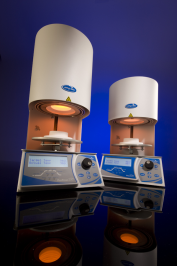 Lean is all about improving the dental lab process. It is about identifying and removing all types of waste and making sure that each task of the process adds value to the product being produced. Having the right material, the right parts, and the right equipment in the hands of the right technician is key. In addition, it is also about having those items in the right condition and ready at exactly the right time. When you add it together that means:
Lean is all about improving the dental lab process. It is about identifying and removing all types of waste and making sure that each task of the process adds value to the product being produced. Having the right material, the right parts, and the right equipment in the hands of the right technician is key. In addition, it is also about having those items in the right condition and ready at exactly the right time. When you add it together that means:
LEAN Preparation + LEAN Planning = INCREASED PROFITS
Few processes are more critical to proper Lean preparation than pressing cycles. A successful press cycle depends on the effective merging of all the preceding manual tasks. Properly sized and designed wax patterns, whether made manually, milled, or printed are dependent on accurate models. Ensuring burn out equipment and procedures are exact and 5S’ed regularly helps guarantee results that add value to the final product. Having Lean practices in place provides the consistency and predictability necessary for the perfect pressed or press-to solution.
Here are 10 valuable preparatory standards that must be in place.
1. Ensure proper tooth preparation to support pressed restorations.
- Minimum reduction of 1.5 mm axially and 2.0mm incisally/occlusally.
- Shoulder or chamfer (90°-110°) with a rounded internal gingivoaxial line angle.
- Rounded line angles and point angles.
2. Wax Lean
- To eliminate the Time Waste associated with the “cut-back” technique, design your wax pattern to the full dimension of the dentin (not full contour), press, then add enamel porcelain.
- Use Whip Mix waxing instruments to prevent the inclusion of carbon residue in wax and to control the temperature of the wax
3. Lean models: Use Lean Rock
- Enables small batch processing (less time, material waste)
- Allows trimming and pinning after just 15 mins.
- Offers low expansion and high scannability
- Presents clear and detailed margins
4. Measure Lean with Aquaspense or AquaSpense SL
- The same ratio of powder to water or Powder to special liquid/water every time
- Accurate fit with less finishing time
- Enough program memory (up to 15 gypsums/investments)
5. Mix Lean with the VPM2 Vacuum Mixer:
- A proper mix every time (hand pre-mixing not necessary)
- Consistent working, setting time
- Enough memory (30 programs) for time, speed and direction.
6. Burnout Lean with the proper temperature
- Make sure furnace is calibrated.
- If raising temperature and/or increasing press furnace time doesn’t fix short pressing, raise the burnout temperature approximately 10°C (40-50°F).
7. Press Lean: Use the right plunger
- Aluminum oxide plungers are a heat sink and need cleaning after pressing. Did you know that there is a minimum of a 10°C difference between an aluminum oxide plunger and a disposable investment one?
- If using an AlOx plunger in Whip Mix ProPress Furnaces, raise the temperature globally in Calibrate Pressing function (Fuse Adjust) by 10° to compensate for the difference.
8. Fire/Press Lean: Use the right furnace
What defines the right pressing furnace? (Use the ProPress SP and see.)
- Faster press cycles (Lean)
- Minimizes reaction layer (Lean)
- Allows pressing of split rings (Lean)
- Faster cycle time due to patented fast-cool feature (Lean)
- 3-year warranty protects equipment investment
9. Fire Lean: Calibrate pressing furnace
“No other tool that ceramists use has a greater effect on the final outcome of a restoration than the porcelain furnace.” Brad Patrick, BSc, Porcelain and Pressing Furnaces, IDT, March 2011
- To ensure accurate calibration, use Whip Mix’s Pro Cal device.
- Calibrate periodically to ensure the right pressing temperature
10. Divest Lean: with very little time or labor with the unique and very Lean Xcavator
- Automatically divests pressed restorations with glass beads without your being there.
- Controls depth of cut.
- Divests hot rings (just pressed), saving an hour or more of cooling time. (Very Lean)
- No breathing in dust, particulates from leaky cabinets – because you’re not there when it’s divesting! (Very healthy!)
- After Xcavator blasting, touch up investment removal is accomplished in less than one minute. (Very profitable)
LEAN TIP: One ring being divested, one ring being pressed, one ring being burned out, and one ring being invested – all in the same 30 minute cycle.












Leave a comment